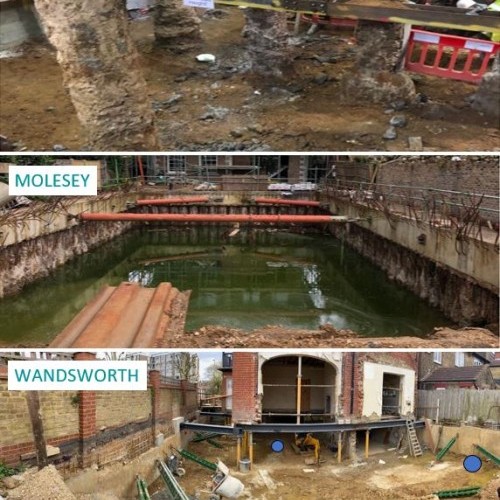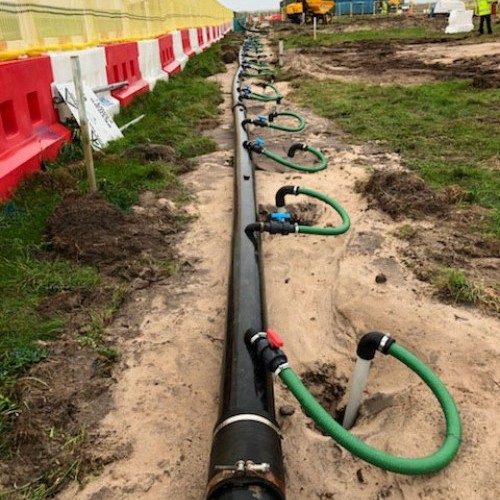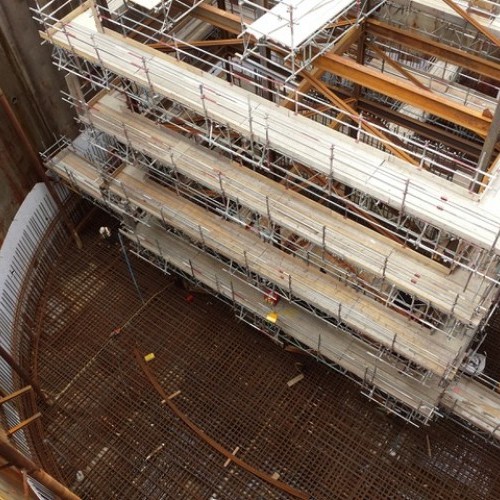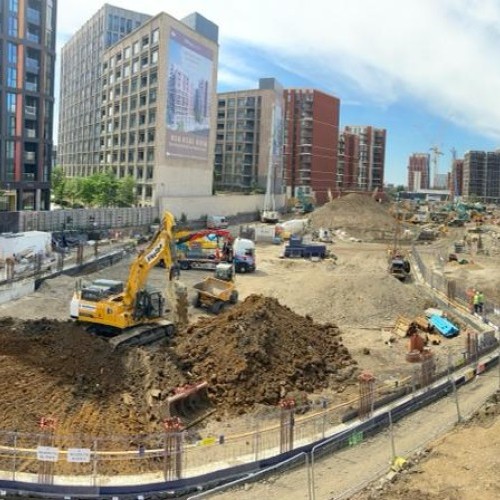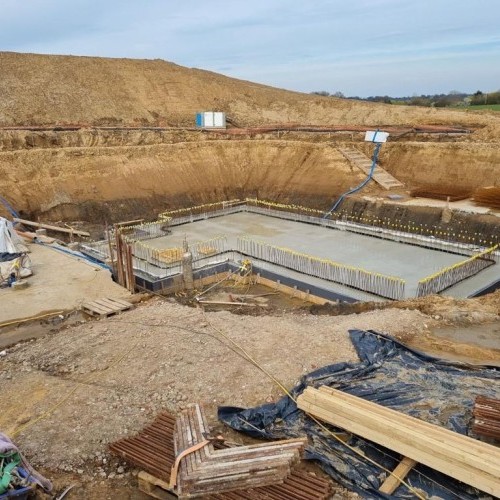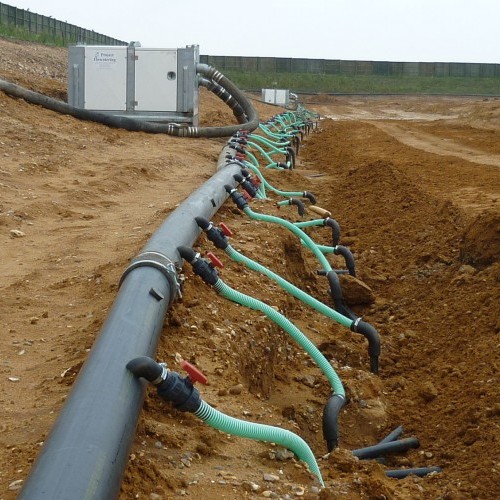Wellpoint dewatering overcome significant challenges in Bedford.
- DURATION 6 MONTHS (ONGOING)
- VALUE £175 000+
Project Summary
The site’s redevelopment involved extensive sub-surface excavations, including pits, tunnels, attenuation tanks, and drainage runs, spanning a total length exceeding 800 meters. These excavations extended to depths ranging from 2.5 meters to 4.5 meters. A thorough Site Investigation noted a geological makeup of Made Ground layered over gravelly SAND, over silty CLAY, with Limestone encountered at a depth of 7.8 meters. Notably, groundwater was consistently encountered at 1.1 meters below ground level across the entire site. Considering the shallow groundwater level and the granular strata, it became evident that substantial dewatering efforts were essential to facilitate excavation under dry conditions.
Challenges
The project faced significant challenges. One such challenge became evident when a large cavity or void formed during the initial construction phase (pre-dewatering). This was most likely caused due to ongoing activities on site and/or karstification of the Limestone underneath. This posed a dual challenge, as the dewatering system not only had to manage groundwater but also stabilise the soil. Additionally, the project was constrained by a permitted discharge rate of 0.25 liters per second (l/s), presenting a considerable obstacle, given that the anticipated discharge rate from dewatering activities exceeded this limit by tenfold.
The Dewatering strategy
To overcome these challenges, PDL designed a custom wellpoint dewatering system, tailored to match the specific needs of each excavation. In total, we installed over 700 wellpoints, along with approximately 1000 meters of headermain and discharge pipework.
For excavations supported by sheet piles, we placed wellpoints internally, spaced at 1.5 meters apart, extending them to a depth of 2 meters below the formation level. Open-cut excavations, on the other hand, received a perimeter wellpoint system for the attenuation tank and double-sided wellpoints for the drainage runs. These wellpoints were all connected to a 150mm diameter headermain, which, in turn, was linked to wellpoint pumps.
To streamline the discharge permitting process (which only allowed for a discharge rate of 0.25 liters per second to the sewer), we proposed installing an on-site soakaway pit. Although piled excavations could comply with these limits given enough time, the open-cut drainage runs and attenuation tank posed more significant pumping rate challenges. PDL conducted an on-site soakaway test to assess the feasibility of a soakaway pit. After careful consideration, we confirmed the feasibility and subsequently excavated a soakaway pit on-site
Outcome
The dewatering system implemented by PDL achieved remarkable success. Notably, it efficiently managed groundwater inflow, but it also played a pivotal role in significantly improving the structural integrity of the soil. The soakaway pit, together with the sewer, produced enough capacity to deal with discharged groundwater. Although the project remains ongoing, a significant portion of the deep excavations and drainage runs are already completed, with PDL maintaining a consistent site presence to monitor the dewatering system. This achievement underscores our ability to overcome formidable challenges through our in-house experience and expertise.



